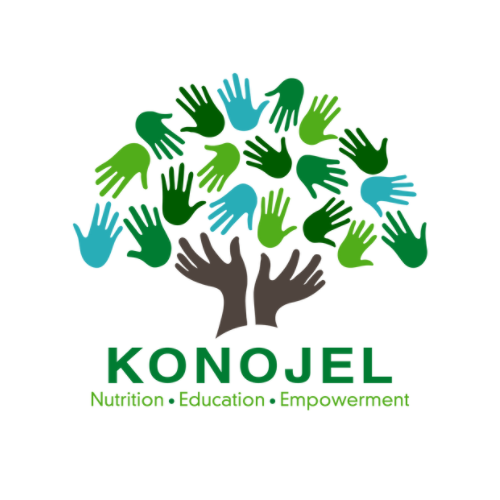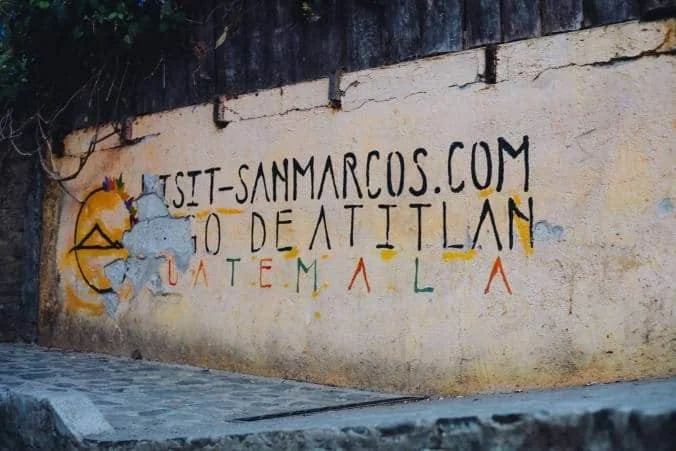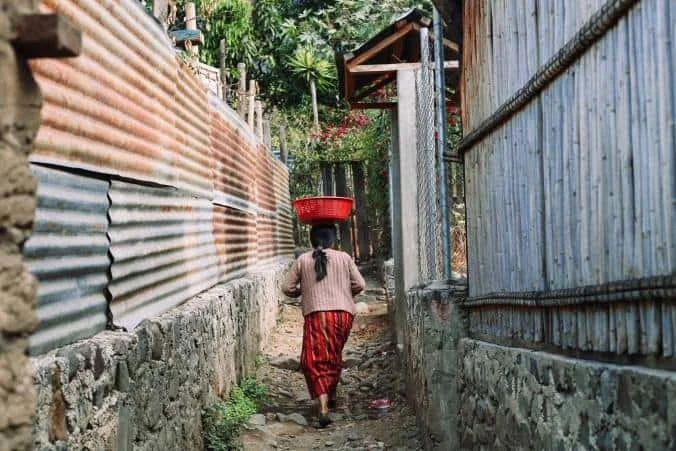Jared Olsen on the link between US immigration, poverty, and malnutrition.
This week Jared Olsen published his fantastic long-form essay entitled:
In their wake, US-bound immigrants leave communities plagued by poverty and malnutrition
In which he unpacks the myriad multi-layered and intertwined issues that drive Guatemalans to leave their generations deep roots to make the perilous trip north and cross the USA border as illegal immigrants. His masterful treatment of the effects, both good and bad, of tourism in the tiny village of San Marcos, the consequences, intended and unintended, of “development” on the communities and food sources, and the root causes of the food desert that has swallowed up areas where previously nutrition was rich and locally grown, is drawn from interviews with the indigenous people of San Marcos who are working to ameliorate the problems within their own communities.
As an “extrajeno,” or foreigner, this can be a challenging read, but it’s important that we understand the history and culture upon which we have an impact when we visit, and ask the difficult but fundamental questions about our role in creating problems and solutions.
Jared has, generously, allowed us to excerpt his lengthy treatise. You’ll find some of the highlights below, but we highly recommend that you click through and READ THE ENTIRE ARTICLE.
“…one wouldn’t at first glance think that San Marcos la Laguna, Guatemala, is a place where children are so malnourished that growth-stunted nine-year-olds look as if they’re only five, or where babies are so underfed that the hair slips off their scalps.
It’s a disturbing reality, one which often eludes the tourists passing through here: outsiders happily wandering the lakeside town’s bewitching, cobblestoned tourism corridor, garbed in flowing flower printed dresses and bead-laced scarves, unaware of the slums that exist just outside the insular bubble of tourism-centric businesses. In those cracked neighborhoods of ramshackle metal, poverty rates soar, spawning an array of social consequences for the towns Ka’qchikel Maya residents, especially malnutrition.
People often focus on the immigration debate where it ends, at a metal fence along the US’s southern border. But they forget how the entire process starts: in poor towns like this, places where the poverty is so systemic, historically rooted and deeply entrenched that even the introduction of tourism does little to stop the continual hemorrhaging of poverty.
“… Chronic malnutrition afflicts on average four out of 10 children in Guatemala,” Andrew Raphael concedes matter-of-factly. He is the director of Konojel, a locally run organization which focuses, among other things, on providing nutrition program for the San Marcos’ at-risk Maya youth. “In rural indigenous areas, you can say as much of 80 percent of the community suffers from signs of chronic malnutrition. In San Marcos… I would put it at 60 percent”
“…You can see the breach between the people that come from outside and those who live here,” says Ingrid Paredes, a restaurateur who works with Konojel. “They have more opportunities, while the poor local families (are) up in the mountains, marginalized and without really knowing much, without receiving much either.”
“… Because Guatemala’s mostly indigenous campesinos were shoved abruptly (and largely without their consent) into a radically integrated global economy, they were forced suddenly to compete against the cheap imported foods of astronomically huge, U.S. farming corporations- an impossible wager for small-scale subsistence farmers like themselves. With no options but to abandon their traditional lifestyles, many have ventured to either Guatemala City or the United States to seek job opportunities, which are now virtually impossible to find in the countryside.
Nearly everyone can name a close friend or family member who’s immigrated to the United States. Immigration- the constant possibility of it, the aura of casting away in search of ever-elusive job opportunities (jobs which rarely manifest themselves in San Marcos)- is for the rural indigenous people as ubiquitous as the sun, the sky, the wind off the lake. After all, it’s not hard to see why some people would leave to become immigrants when one looks at the social situation of San Marcos itself.
This absence of jobs- unemployment for Guatemalan young men in 2012 was at a whopping 25 percen- is diagnosed by many as the greatest culprit in perpetuating San Marcos’ poverty. Joblessness, in turn, perpetuates and accentuates a slew of interconnected social malaises, from alcoholism to juvenile crime to under-education to- of course- malnutrition:
“… They don’t have many opportunities to work,” says Maria Mejía Martín, the coordinator of Konojel’s nutrition program. “Nor to become educated.”
“… In San Marcos, like many communities in Guatemala” says Andrew, “access to gainful, dignified and decent paying employment is scarce.”
“… Paredes says that the economic impoverishment of San Marcos is but one infinitesimal piece of the larger economic restructurings that’ve long since swept the world. Because of this, there is on one level a certain cosmic futility associated with the nonetheless noble, necessary social work executed by NGO’s like Konojel.
“The truth,” she says, “is that there are the interests of large corporations and governments in maintaining this situation. And of course, they maintain it.”
“… “Before,” says Maria, “we were eating beans, tortillas, lots of herbs. More organic.”
“That’s what they were eating before,” Roberto continues. “But when the highway came, when the new means of transport came with it, junk food started to be introduced, and the people liked to buy Coke, to buy Pepsi. But no one realized the consequences that came through the great sicknesses that these foods caused.”
In the same places where they once cultivated pumpkins, carrots, and beets, there now lay blocks of trendy hostels, restaurants, and yoga meditation centers, places which which- though benefiting community members to a certain extent- ultimately play to the financially benefit of their foreign owners. And in the same places where a local culture once sustained itself through the cultivation of its own agricultural fruits, children now fed on a steady diet of cheap, imported junk food descend to levels of malnourishment that are close to being life-threatening.
“… Not all is tragic in San Marcos. Fiercely proud of of their indigenous heritage- ninety percent of the local population still speaks Ka’qchikel- many people have nonetheless found ways to carve out meaningful lives against a backdrop of incredible poverty, doing so not only with resourcefulness, but with doses of vigor and brio that are nothing short of inspiring.”





